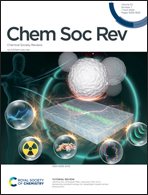Advancing nanotechnology for neoantigen-based cancer theranostics
Abstract
Neoantigens play a pivotal role in the field of tumour therapy, encompassing the stimulation of anti-tumour immune response and the enhancement of tumour targeting capability. Nonetheless, numerous factors directly influence the effectiveness of neoantigens in bolstering anti-tumour immune responses, including neoantigen quantity and specificity, uptake rates by antigen-presenting cells (APCs), residence duration within the tumour microenvironment (TME), and their ability to facilitate the maturation of APCs for immune response activation. Nanotechnology assumes a significant role in several aspects, including facilitating neoantigen release, promoting neoantigen delivery to antigen-presenting cells, augmenting neoantigen uptake by dendritic cells, shielding neoantigens from protease degradation, and optimizing interactions between neoantigens and the immune system. Consequently, the development of nanotechnology synergistically enhances the efficacy of neoantigens in cancer theranostics. In this review, we provide an overview of neoantigen sources, the mechanisms of neoantigen-induced immune responses, and the evolution of precision neoantigen-based nanomedicine. This encompasses various therapeutic modalities, such as neoantigen-based immunotherapy, phototherapy, radiotherapy, chemotherapy, chemodynamic therapy, and other strategies tailored to augment precision in cancer therapeutics. We also discuss the current challenges and prospects in the application of neoantigen-based precision nanomedicine, aiming to expedite its clinical translation.



 Please wait while we load your content...
Please wait while we load your content...